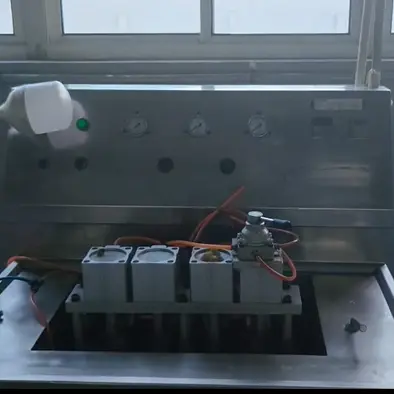
How the Shaping Process Enhances Precision Castings
The shaping process plays a pivotal role in Precision Castings, ensuring components meet exact specifications. This meticulous method involves several steps that contribute to the high quality of the final product. Precision casting, renowned for its ability to produce complex and highly accurate metal components, offers excellent dimensional accuracy and tolerance control. Manufacturers rely on this process to achieve intricate designs and precise-sized casting parts. Understanding the shaping process is crucial for appreciating the precision and complexity involved in creating these components, which are indispensable in various industries.

How Precision Casting Shapes Complex Parts
Precision casting stands as a pivotal manufacturing process, expertly shaping complex parts through a meticulous shaping process that achieves remarkable accuracy and intricate designs. This technique proves indispensable for industries that demand detailed and precise components, notably aerospace and medical devices. The global precision casting market, valued at USD 15,520 million in 2023, is projected to reach USD 20,490 million by 2030, driven by a 4.0% CAGR. This growth underscores the critical role of precision casting in meeting the high standards of these sectors. By enabling the creation of components with exact specifications, precision casting supports advancements in technology and innovation.

How the Shaping Process Transforms Precision Castings
The shaping process plays a crucial role in transforming precision castings by significantly enhancing their accuracy and functionality. This meticulous process ensures that each casting achieves the desired dimensions and surface finish, which is vital in modern manufacturing. Precision casting, often preferred over other methods, produces parts with smoother surfaces and more precise dimensions. This not only reduces scrap but also lowers production costs. The shaping process, therefore, stands as a cornerstone in achieving high-quality outcomes in various industries, emphasizing the importance of precision in today's competitive market.

How to Conduct Sealability Testing for Precision Castings
Sealability testing plays a pivotal role in ensuring the integrity and performance of precision castings. These castings often face high internal pressures and thermal stresses, particularly during processes like de-waxing and metal pouring. The ability to contain fluids or gases without leakage is crucial in many applications. Precision castings must withstand these conditions to maintain their structural integrity. Testing for sealability ensures that the casting can handle such demands, preventing potential failures and maintaining operational efficiency.

Sealability Testing: Ensuring Leak-Free Castings
Sealability testing plays a pivotal role in precision castings, ensuring that components remain leak-free under operational conditions. This testing process identifies potential leakage paths, which can arise from factors like insufficient contact stress or inherent porosity in the casting material. Industries such as automotive, aerospace, and oil and gas demand high standards for sealing to maintain product performance and safety. By understanding and controlling the leak rate, manufacturers can meet stringent specifications and prevent failures that could lead to costly consequences.

Sealability Testing Made Simple for Castings
Sealability testing ensures that castings meet stringent standards for leak prevention. You need this testing to verify the integrity of components used in critical applications like valves and hydraulic systems. By conducting sealability testing, you confirm that each casting performs reliably under pressure. This process not only prevents costly failures but also enhances the overall quality of precision castings. As a result, you maintain high standards in manufacturing and deliver products that meet customer expectations.

Silicone Sol Precision Casting Compared to Traditional Methods
Silicone sol precision casting stands out from traditional methods due to its advanced approach. It uses silicone sol as a binder, which enhances surface finish and dimensional accuracy. This method is gradually evolving towards greater intelligence, automation, and precision, offering a new path for the transformation of the casting industry. When choosing a casting method, you must consider the specific application requirements. Silicone sol precision casting provides superior quality and efficiency, making it ideal for complex shapes and high-precision needs. Selecting the right method ensures optimal results and cost-effectiveness.

Silicone Sol Precision Casting: Everyday Applications
Silicone sol precision casting stands out as a detailed Casting Process using a silica sol binder. This method allows you to create complex shapes with remarkable precision. You benefit from its ability to produce components with greater dimensional accuracy and a superior surface finish compared to traditional methods. Additionally, this process reduces material wastage and energy consumption, making it a sustainable choice for manufacturing high-quality metal parts. By using silicone sol as a binder, you achieve both efficiency and excellence in your casting endeavors.

Why Silicone Sol Precision Casting Is Ideal
Silicone sol precision casting stands out as a remarkable manufacturing method. You can achieve intricate and complex shapes with remarkable accuracy using this technique. Its unmatched precision and superior surface finish make it a preferred choice in industries like aerospace, automotive, and medical equipment. The process allows for the creation of components with tight tolerances, reducing the need for additional machining. This versatility extends to a variety of materials, including high-performance alloys. By choosing silicone sol precision casting, you ensure high-quality components that meet stringent industry standards.

What is Silicone Sol Investment Casting Process
Silicone sol investment casting stands as a precision casting method that uses silicone sol as a binder. This process excels in producing high-quality metal parts with superior surface finishes. You will find that it offers greater dimensional accuracy compared to traditional methods, reducing the need for extensive post-casting machining. The high purity and consistency of silicone sol ensure minimal defects in the final product. Additionally, this method can withstand high temperatures, making it ideal for creating intricate designs with tight size tolerances.















